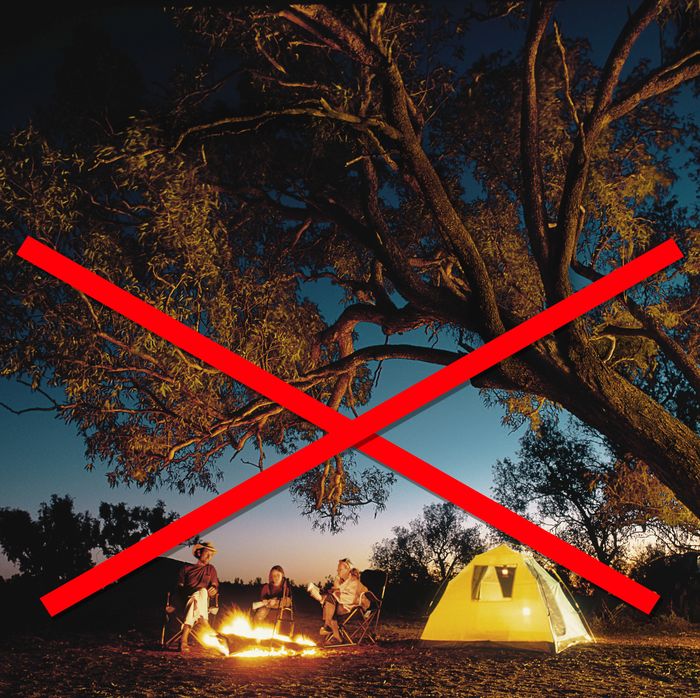
What Is Camp, the Met Gala 2019 Theme?

Photo: David Trood/Getty Images
The Met Gala is camp-themed this year.
Though each of those words might have a clear meaning to you individually, there is a chance that, together in a sentence, they mean nothing. I understand and I urge you not to worry. We’re here to help.
I suppose it makes sense first to define “the Met Gala,” which is happening tonight. I should note immediately that we are not talking about the Mets (plural) Gala. The Mets is a baseball team — one of the best ones, particularly when compared with the Yankees. The Met and the Mets are not the same thing.
The Met (singular) is shorthand for the Metropolitan Museum of Art. Gala, well, I don’t know what “gala” is. Gala is slightly more difficult. I think it’s, like, some sort of a dance. For a rundown of what exactly the Met Gala is, I will ask you to head to my colleague Sarah Spellings’s Met Gala explainer.
But what is camp? This is tricky. I will tell you immediately, similar to when we made the Met/Mets distinction, that it is not camp like camping, thank God. I hate camping. You buy a bunch of stuff in order to sleep on dirt with bugs? I’m not a fool … I’ll sleep in my bed, thanks. I pay a ton of money for an apartment and you think I’m going to go sleep on the ground outside in some stupid tent, and probably it’s raining? Yeah right. Insane. I can walk in the woods during the daytime if I want nature, and then I’ll go home and sleep in a bed.
This theme isn’t that, though. This is “camp” like the aesthetic; like Susan Sontag’s 1964 essay “Notes on ‘Camp,’” which serves as a framework for the gala’s theme and the Met’s “Camp” exhibition. “Camp is a certain mode of aestheticism,” Sontag wrote. “It is one way of seeing the world as an aesthetic phenomenon. That way, the way of Camp, is not in terms of beauty, but in terms of the degree of artifice, of stylization.” Okay. Have you read the rest of the essay? If not feel free to open it in a new window, read it, and come back when you’re ready.
Okay, did you read it? Do you still not totally understand what camp is? I know; I’m sorry. This year the gala is going to be co-chaired by Lady Gaga, Alessandro Michele, Harry Styles, and Serena Williams. Maybe this Lady Gaga fan account tweet will help:
Huh. That is actually quite helpful, and sort of quotes some of the Met’s own writing on the topic; thank you, @LadyGagaNowNet. But I’m still not sure what camp is.
I emailed the Met asking, “What is the Met Gala and what is camp?” hoping to get maybe a two-sentence response, and they very nicely sent me back several pages of promotional material, which included many more sentences than I wanted. Still, it was helpful.
According to the press release, the museum’s upcoming “camp” exhibition, which opens on Met Gala day, spans from the 17th century to the present, tracing camp’s origins from Versailles to the dandy figure to “the queer subcultures of Europe and America in the late 19th and early 20th centuries.” Thank you, press release. “The largest section of the exhibition will be devoted to how these elements — which include irony, humor, parody, pastiche, artifice, theatricality, and exaggeration — are expressed in fashion.” Great.
But still, what is it? GQ is asking. Refinery29 is asking. Someone asked Yahoo! Answers. (They write, “Ive been hearing it so much i dont know what it means!!! Can someone help me out.”) Each explains the style, when explanation is given, more with examples than by definition: Lady Gaga’s meat dress, Björk’s swan dress, the Super Bowl, Showgirls. It is perhaps not something that can be known as much as it is something that can be understood.
In order to better understand “camp” I reached out to Kate Pierson, hotelierand founding member of seminal New Wave party band the B-52’s. “There’s humor and a bit of pathos in loving something popular culture rejects,” she told me in an email.
“When the B-52’s first toured Europe, an English journalist said, ‘They can’t export your “American trash aesthetic” here!’ The B-52’s have been mixing high culture and love of the low ever since. Wearing big wigs, we sing with genuine emotion and darkness; in a song about wigs, called — uh — ‘Wig,’ we sing ‘on the neon, neon side of town’ while we do-si-do across the stage.”
“For some people on the outside of the dominant culture,” Pierson said, “camp is an important way of interpreting the world and a necessity for living in it. There’s something there that makes you laugh like an aha and ooooahh, yikes! all at once”
I love the B-52’s intensely and I am so grateful to Kate Pierson for this insight and so honored that she would give it to me. Please listen to the B-52’s today. I believe we can now rewrite our sentence in full.
The Met Gala, which is not the Mets Gala, is camp-themed this year, which is not camp, like, going camping, but camp like the aesthetic style “camp,” which is somewhat difficult to define but includes elements of irony, humor, parody, pastiche, artifice, theatricality, and exaggeration; it makes you at once laugh and say oooahhhh, yikes! Lady Gaga is one of the Met Gala’s co-chairs. The B-52’s rule.
Ah. Much better.

I say: "All this to avoid stating CAMP is the gay aesthetic..."
ReplyDeletethat is queer, quaint and weird
ReplyDelete